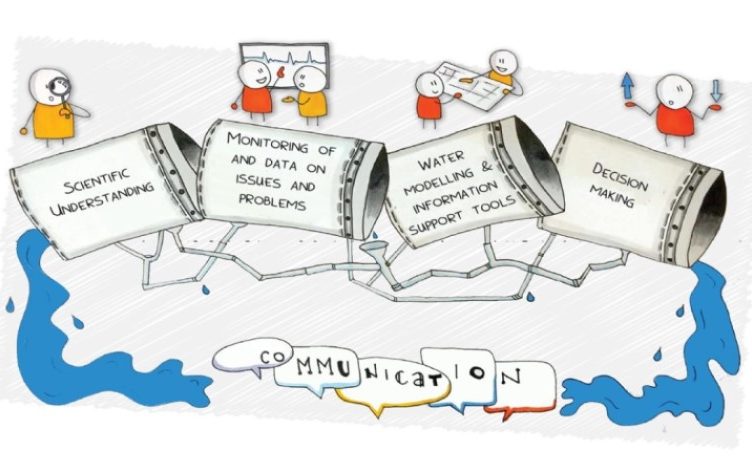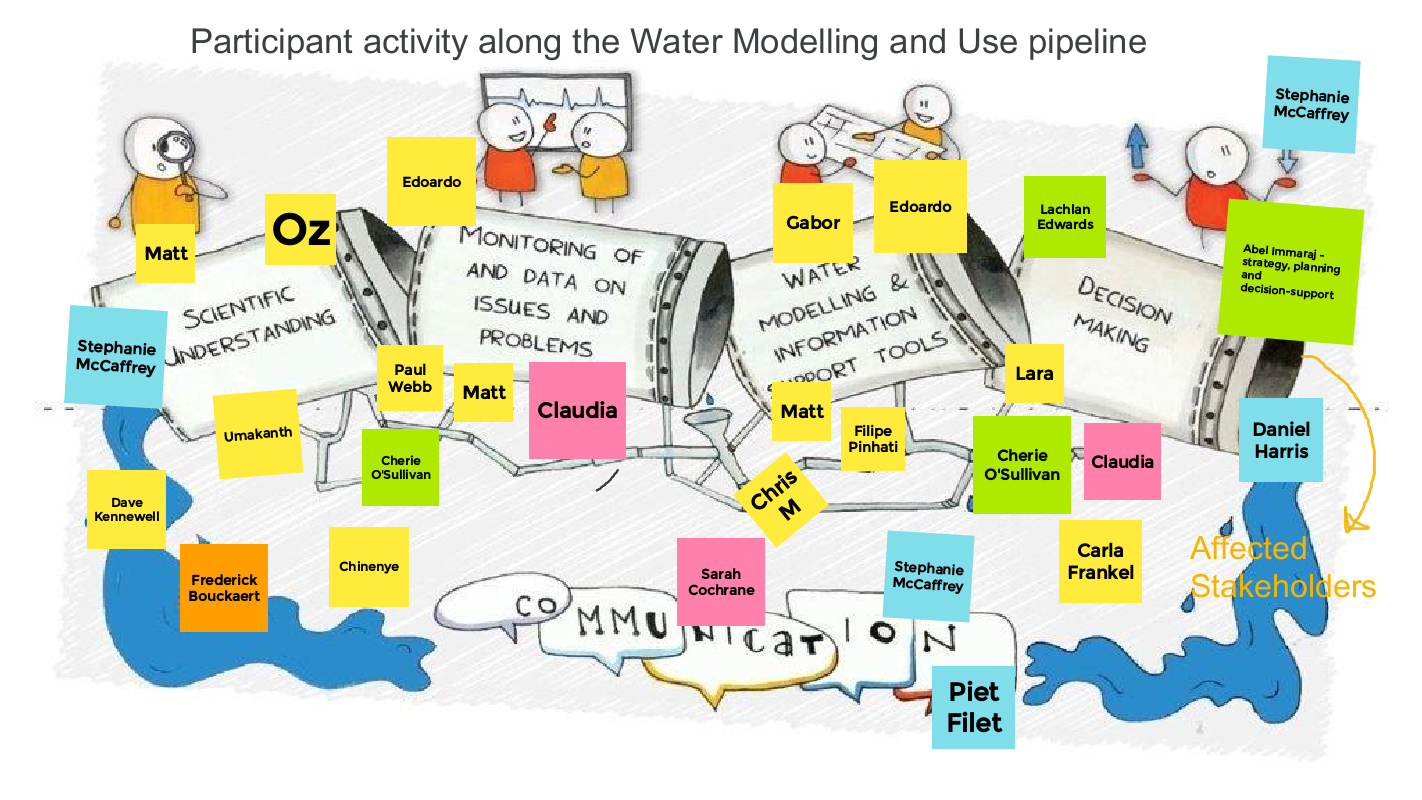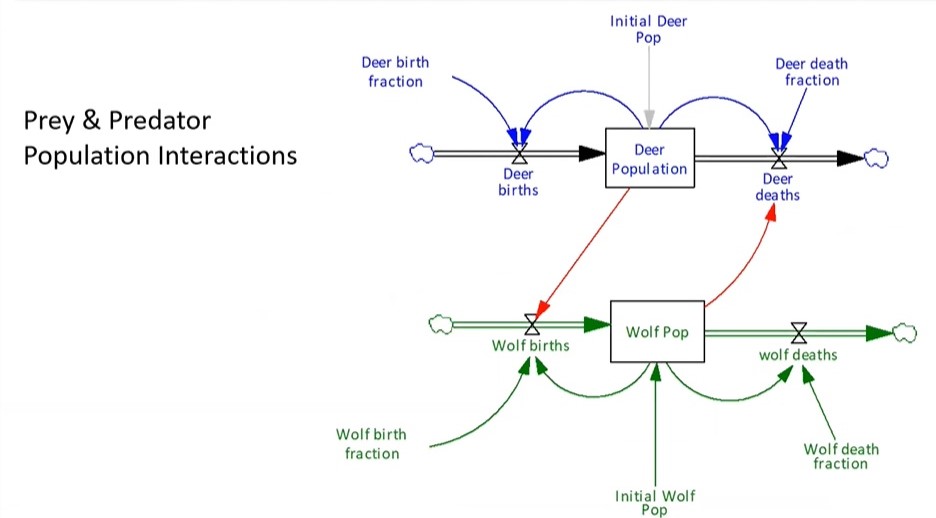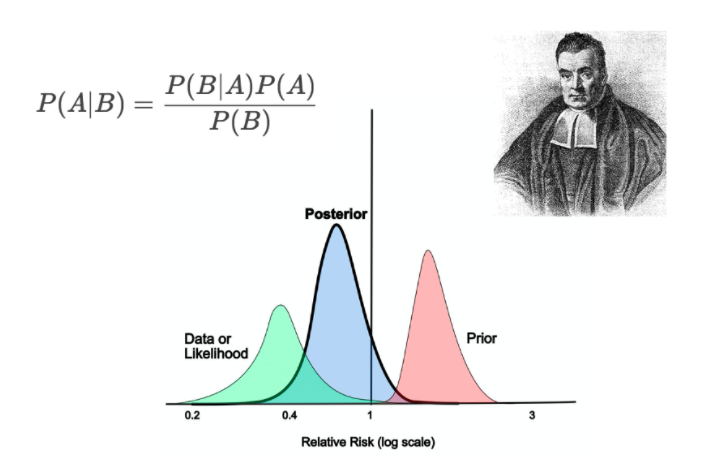
05/12/2024
Event Summary: Overview of water quality modelling projects from the Queensland Water Modelling Network with Callym Dunleavy
Read more
As part of the Queensland Water Modelling Network’s (QWMN) engagement activities, we offer occasional knowledge sharing sessions through a technical focussed modelling collective, we call the Hive. The most recent event was a workshop on systems thinking and modelling water management problems – an introduction. Presented by Edoardo Bertone and Oz Sahin, from Griffith University, this 3-hour online workshop, was an exploration of how integrating quantitative and qualitative information, can build effective conceptual models for complex systems.
Along with our regular participants, a mix of researchers, consultants, water utility specialists, we were joined by colleagues from the NSW Department of Primary Industry and Environment, Victoria’s Department of Environment, Land, Water and Planning, and others working on projects from Dubai to Finland.

Oz began the session, by bringing us all onto the same page, describing a model as a tool to help us understand, explain, anticipate, and make decisions. But how representative are models, really? Unlike other methods, a systems-based approach offers opportunities to combine concepts and address the need for explicitly accounting for the dynamics, complexities, and interconnectedness of various systems.
From here, we examined both mechanistic (reductionist, no consideration for time, e.g. Bayesian Belief Networks) and systemic approaches (time is considered, interaction between parts of the system are more important than the parts themselves, and provides a view of the process of change, e.g. System Dynamics). Oz highlighted some key leverage opportunities that affect systemic change, and discussed the basic elements of system dynamics models, considering a range of approaches and their useful application.
Further discussion among participants highlighted that these models rely on “confirmation”, not “validation” when checking model accuracy. Knowing the natural system through stakeholder engagement and observing natural patterns and their expression in your model, can help you recognise if the system is behaving as expected.

Edoardo was up next to walk us through Bayesian Belief Networks (BBN), a helpful modelling tool to support the use and integration of knowledge and data from multiple sources, including expert advice. Useful for determining probability, BBNs can be used in real-time and are often applied to assess risk, though it is not the most appropriate tool for time-dependent predictions, it is possible to incorporate some dynamic components.
Bayes theorem, the basis for BBN, is like an “informed guess” and is conveniently applied where the joint probability of something is difficult to calculate. It uses prior information to make improved (sometimes counter-intuitive) predictions, and is significantly more cost and time effective, to build and run, than alternatives.

Systems thinking is a great framework to consider water management problems. It allows users to map out key components of a system using stock and flow diagrams which, can be as simple or as complex as needed.
It is almost impossible to validate a systems-based model. Instead, it is confirmed through engaging with stakeholders and looking for patterns to tell us whether the system is acting as expected.
System Dynamics models are a great tool for decision making as they are continuous (time sensitive) and have the ability for a high level of abstraction.
BBN allows access to expert opinion in the absence of quantitative evidence.
The mathematics behind BBN often shows up preconceived biases we may have – some participants were surprised at the result when working through exercises.
It is possible to integrate BBN with System Dynamics so that time-related effects can be more explicitly accounted for
We thank Edoardo and Oz for joining us and contributing to the network.
Dr Edoardo Bertone – Senior Lecturer at the School of Engineering & Built Environment, and a member of Cities Research Institute and Australian Rivers Institute, Griffith University – https://experts.griffith.edu.au/8049-edoardo-bertone/about
and,
Dr Oz Sahin – Senior Research Fellow at Griffith Climate Change Response Program https://experts.griffith.edu.au/9095-oz-sahin
Main image source: https://earthobservatory.nasa.gov/